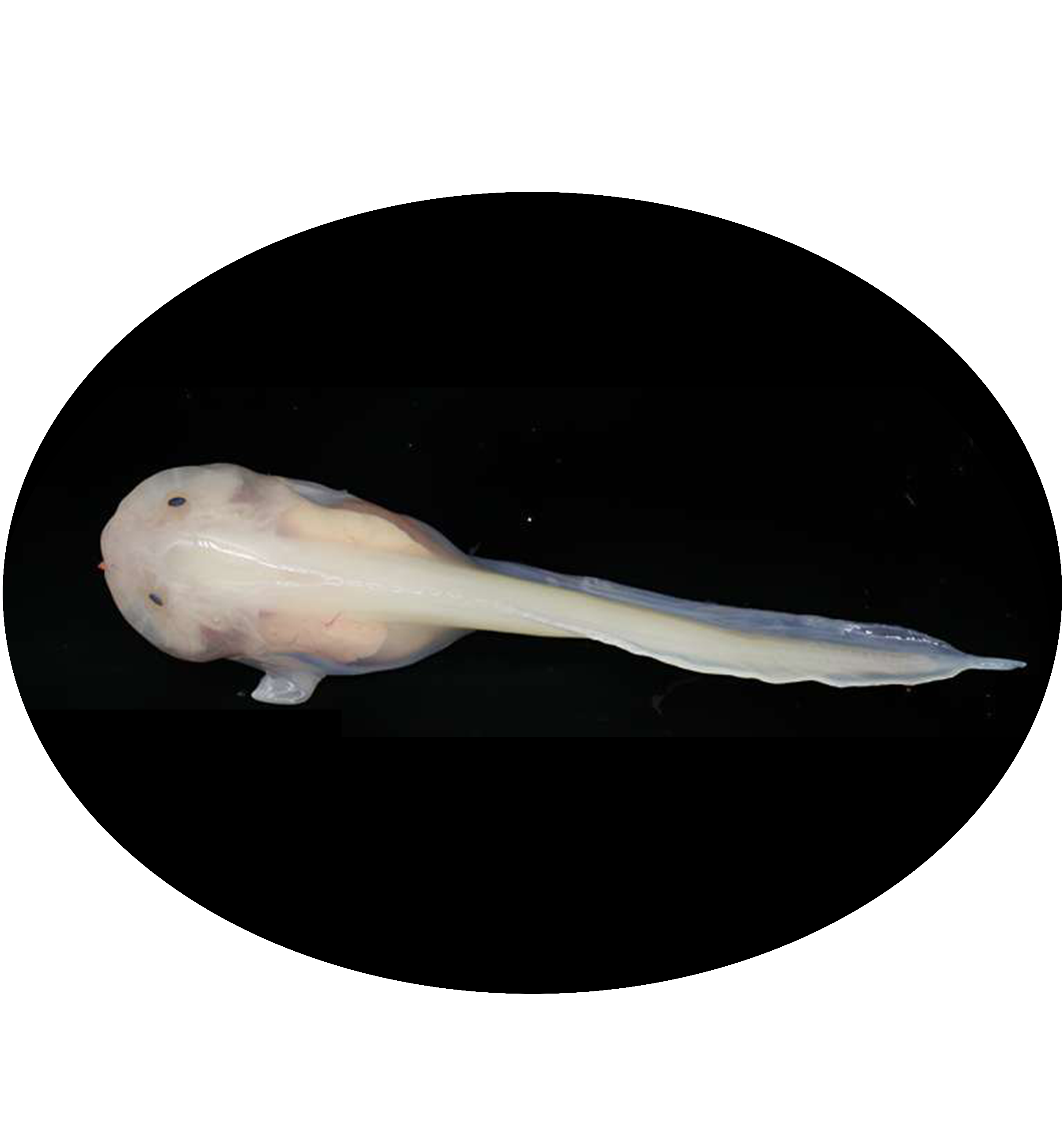
Pseudoliparis swirei is a species of snailfish in the family Liparidae, discovered in the hadal zone of the Mariana Trench at depths exceeding 7,000 meters. This species is adapted to extreme deep-sea environments, thriving under immense pressure and near-freezing temperatures. Pseudoliparis swirei is characterized by its gelatinous body and reduced skeletal structure, which help it withstand the crushing pressures of the deep ocean. Its discovery provides valuable insights into the adaptations of vertebrates to one of the most extreme habitats on Earth.
Animalia (Kingdom); Chordata (Phylum); Vertebrata (Subphylum); Gnathostomata (Infraphylum); Osteichthyes (Parvphylum); Actinopterygii (Gigaclass); Actinopteri (Superclass); Teleostei (Class); Perciformes (Order); Cottoidei (Suborder); Liparidae (Family); Pseudoliparis (Genus); Pseudoliparis swirei (Species)
Pseudoliparis swirei Gerringer & Linley, 2017
1. Gerringer M E, Linley T D, Jamieson A J, et al. Pseudoliparis swirei sp. nov.: a newly-discovered hadal snailfish (Scorpaeniformes: Liparidae) from the Mariana Trench[J]. Zootaxa, 2017, 4358(1): 161–177-161–177. (Gerringer et al., 2017)
Holotype is immature. Ripe females had eggs up to 9.4 mm diameter, among the largest teleost eggs recorded, 0.4 mm smaller than the largest record. The eggs were unsorted within gonad, with the largest eggs free and interspersed within a matrix of smaller eggs. No developmental structures were visible within even the largest eggs. Two distinct size classes of eggs present with up to 23 large eggs (>5 mm) and up to 851 small eggs of less than half the diameter of the larger size class. There were rarely intermediate stages (Figure 7). Individuals with only small eggs had maximum egg sizes ranging from 0.7 to 1.4 mm. Genital papilla visible in freshly collected males, oriented anteriorly
The Mariana Trench famously houses the ocean’s deepest point, at Challenger Deep, named for the HMS Challenger expedition which discovered the trench in 1875. Their deepest sounding of 8,184 m, then the greatest known ocean depth, was christened Swire Deep after Herbert Swire, the ship’s First Navigating Sublieutenant (Corfield 2003). We name this fish in his honor, in acknowledgment and gratitude of the crew members that have supported oceanographic research throughout history
Known only from the Mariana Trench at capture depths from 6,898–7,966 m, individuals likely this species were recognized in video at depths 6,198–8,098 m
| Species | Phylum | Common Name | Ecosystem | Depth | Habitat | NCBI Taxonomy ID |
|---|---|---|---|---|---|---|
| Pseudoliparis swirei | Chordata | Mariana hadal snailfish (MHS) | Deep sea | 7,254 | the Mariana Trench (142°26′E, 11°07′N) | 2059687 |
| Genome Assembly | Genome Size | Assembly level | Released year | WGS accession | Submitter | BioProject | BUSCO completeness (%) | Scaffold/Contig N50 (kb) | GC content (%) | Repeat Rate (%) | Gene Number |
|---|---|---|---|---|---|---|---|---|---|---|---|
| - | 684Mb | scaffold | 2019 | - | - | PRJNA472846 | 91.70 | 25,738/4,219 | 44 | - | 25,262 |
| Title | Journal | Pubmed ID |
|---|---|---|
| Morphology and genome of a snailfish from the Mariana Trench provide insights into deep-sea adaptation | Nature Ecology & Evolution | 30988486 |
| Gene ID | Description |
|---|---|
| Tanaka00041 | - |
| Tanaka00042 | AF4/FMR2 FAMILY MEMBER |
| Tanaka00043 | - |
| Tanaka00044 | HSC70CB, ISOFORM G-RELATED |
| Tanaka00045 | RBR FAMILY RING FINGER AND IBR DOMAIN-CONTAINING |
| Tanaka00046 | PLACENTAL PROTEIN 11-RELATED |
| Tanaka00047 | NEDD4 FAMILY INTERACTING PROTEIN 1/2 |
| Tanaka00048 | SPROUTY |
| Tanaka00049 | FIBROBLAST GROWTH FACTOR |
| Tanaka00050 | OLIGOPHRENIN 1 |
| Tanaka00051 | KNIRPS-RELATED PROTEIN-RELATED |
| Tanaka00052 | GOLGI MEMBRANE PROTEIN YIP1 |
| Tanaka00053 | POTASSIUM CHANNEL TETRAMERIZATION DOMAIN-CONTAINING |
| Tanaka00054 | - |
| Tanaka00055 | GLUTAREDOXIN DOMAIN-CONTAINING CYSTEINE-RICH PROTEIN 2 |
| Tanaka00056 | - |
| Tanaka00057 | LEUCYL-TRNA SYNTHETASE |
| Tanaka00058 | POU DOMAIN |
| Tanaka00059 | - |
| Tanaka00060 | RAD50 |

